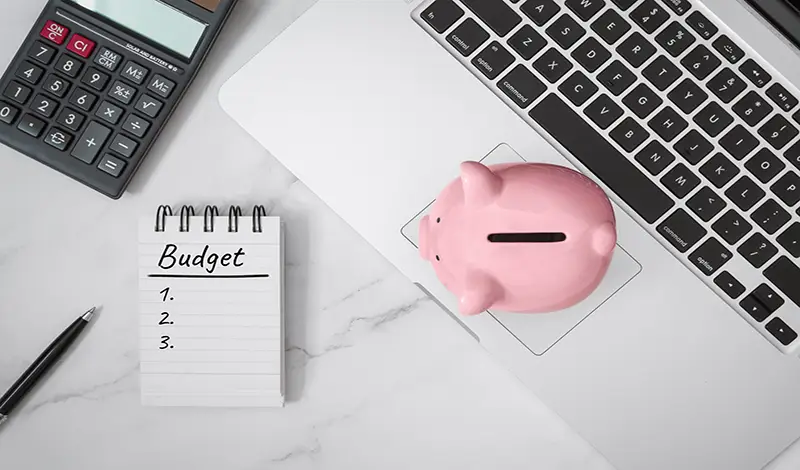How to Save for a Down Payment in 2024
Published on April 9, 2024 | 6 Minute read

Melanie
Ortiz Reyes
Content Specialist
Saving for a down payment on a home is a significant financial goal that requires careful planning, discipline, and strategic decision-making, especially in 2024 when economic conditions and real estate markets may be dynamic. Whether you're a first-time homebuyer or looking to upgrade to a new property, navigating the path to saving for a down payment can seem daunting. However, with the right strategies and mindset, you can make steady progress towards achieving your homeownership dreams.
Understanding the Importance of a Down Payment
Before diving into specific saving strategies, it's important to understand why a down payment is crucial when purchasing a home. A down payment is a percentage of the home's purchase price that you pay upfront. It reduces the amount you need to borrow and demonstrates financial responsibility to lenders, potentially resulting in better loan terms and lower interest rates.

Assess Your Financial Situation
The first step in saving for a down payment is to assess your current financial situation honestly. Take stock of your income, expenses, debts, and savings. Create a detailed budget that outlines your monthly income and all expenses, including rent, utilities, groceries, transportation, debt payments, and discretionary spending.
Identify areas where you can cut back or eliminate expenses. This might involve reducing dining out, canceling unused subscriptions, finding more affordable housing options, or negotiating lower bills for services like cable or internet.
Set Realistic Savings Goals
Once you have a clear understanding of your finances, set realistic savings goals for your down payment. Determine how much you need for a down payment based on the price range of homes you're considering and the minimum down payment required by lenders (usually ranging from 3% to 20% of the home's purchase price).
Break down this total amount into manageable monthly or weekly savings targets. Consider using online calculators or speaking with a financial advisor to help you determine an achievable savings goal based on your income and expenses.

Create a Dedicated Savings Account
Open a dedicated savings account specifically for your down payment funds. Keeping your down payment savings separate from your regular checking or savings accounts can help prevent you from accidentally spending these funds on other expenses.
Look for a high-yield savings account that offers competitive interest rates to help your money grow faster over time. Set up automatic transfers from your paycheck or checking account to your down payment savings account to ensure consistent contributions.
Increase Your Income
While inflation can make saving difficult, finding ways to increase your income can significantly boost your savings efforts. Consider taking on a part-time job, freelancing, selling unused items, or exploring opportunities for career advancement or higher-paying positions.
Use any additional income you earn solely for your down payment savings. Remember to adjust your budget accordingly to accommodate changes in your income and expenses.

Cut Expenses and Live Below Your Means
Cutting expenses is one of the most effective ways to free up more money for savings. Look for ways to reduce your monthly spending without sacrificing essential needs. Consider the following tips:
- Cook at Home - Eating out can quickly drain your budget. Plan meals, buy groceries in bulk, and prepare food at home to save money on dining expenses.
- Reduce Utility Costs - Use energy-efficient appliances, turn off lights when not in use, adjust thermostat settings, and explore cheaper alternatives for internet, phone, and cable services.
- Shop Smart - Use coupons, buy generic brands, and compare prices before making purchases. Avoid impulse buying and stick to your shopping list.
- Limit Entertainment Spending - Instead of expensive outings, look for free or low-cost activities such as hiking, picnics, or visiting local museums and parks.
Prioritize Debt Repayment
If you have outstanding debts such as credit card balances, loans, or student debt, prioritize paying off high-interest debts while saving for your down payment. Allocate extra funds toward debt repayment each month to reduce interest charges and accelerate your progress toward debt-free living.
Consider using the debt snowball or avalanche method to systematically pay off debts. The snowball method involves paying off the smallest debt first, while the avalanche method focuses on tackling debts with the highest interest rates first. Choose the approach that aligns best with your financial goals and motivates you to stay on track.

Explore Down Payment Assistance Programs
In addition to personal savings, explore down payment assistance programs offered by government agencies, nonprofit organizations, or local housing authorities. These programs provide grants, loans, or matching funds to help first-time homebuyers with down payment and closing costs.
Research eligibility criteria, application requirements, and available programs in your area. Some programs may have income limits, property location restrictions, or specific homeownership education courses that participants must complete.
Monitor Your Progress and Stay Motivated
Regularly monitor your progress toward your down payment savings goal. Review your budget regularly to track income, expenses, and savings contributions. Celebrate milestones along the way, such as reaching a certain savings percentage or paying off a significant debt.
Stay motivated by visualizing your future home and the benefits of homeownership, such as stability, equity building, and personal pride. Surround yourself with positive influences, whether it's reading success stories of others who achieved homeownership or seeking support from friends, family, or financial mentors.

Be Flexible and Adapt as Needed
Financial situations can change, so be flexible and willing to adapt your savings plan as needed. Unexpected expenses or fluctuations in income may require adjustments to your budget or savings timeline. Stay proactive and make informed decisions to keep moving forward toward your goal.
Consider consulting with a financial advisor or housing counselor for personalized guidance and advice tailored to your specific circumstances. They can offer insights, strategies, and resources to help you navigate the homebuying process successfully.
Remember that saving takes time and persistence, so stay committed to your goals and adapt strategies as needed based on changing circumstances. With determination and smart financial management, you can turn your dream of owning a home into a reality this year!